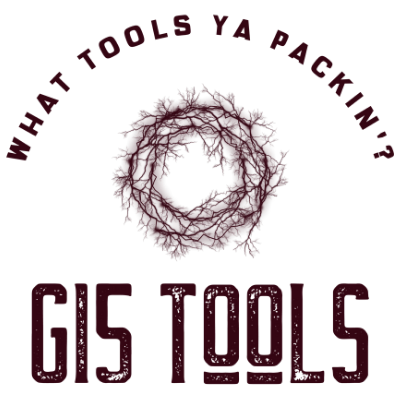A strong portfolio is not a trophy case, it is a narrative. Recruiters and leads want proof of thinking, taste, and follow-through. Commercial logos help, yet they are not required. With deliberate project choices and honest documentation, a newcomer can show real skill, real momentum, and real fit.
Variety matters more than sparkle. Think of a modern catalog with distinct themes, not a random pile of screenshots. Even entertainment like online slots illustrates the point: themed sets with clear mechanics make evaluation simple. A portfolio should do the same by grouping work around problems solved, methods used, and outcomes measured.
Pick Problems, Not Just Tools
Tools change. Problem solving endures. Start by defining three everyday pains for the target role. A designer might choose checkout friction, onboarding drop-off, and color contrast. A developer might choose data sync, file uploads, and fast search. A marketer might choose lead magnets, nurture flows, and launch pages. Each project becomes a small case that shows understanding of users, constraints, and tradeoffs.
Time box each build. Short sprints force decisions and prevent endless tinkering. A simple rhythm keeps momentum: one week for research and framing, one for building, one for testing and polish, and one for storytelling. The fourth week is the secret weapon. Clear writeups beat perfect code or pixel drama.
Starter Projects That Signal Skill
- Fix a real life irritant
Redesign a clumsy form used daily or rebuild a slow personal tool. Record the before state, measure the after state, and highlight what changed. - Clone with a twist
Recreate a known feature from a popular app, then add one improvement grounded in research. The twist shows taste and initiative. - Public brief, private rigor
Pick a challenge from a community prompt, but go deeper on validation and edge cases. Show that constraints received respect. - Data story in two charts
Pull an open dataset, ask one sharp question, then answer with two clear visuals and a paragraph of insight. Brevity signals judgment. - Accessibility pass on a template
Take a common template and bring it to AA contrast, keyboard navigation, and screen reader clarity. Document each fix.
These projects are small, yet they demonstrate the muscles that matter: problem framing, execution, and reflection. Even one or two solid examples can move a conversation forward.
Make Process Visible
A portfolio earns trust when the process feels tangible. Include a one-page brief for each project with goal, audience, constraints, and success metric. Add a quick outline of alternatives considered and the reason for the final choice. If mistakes happen, show them. Recovery and iteration read as maturity, not weakness. Screenshots of sketches, prototypes, and tests humanize the work without leaning on a résumé full of brand names.
Video helps. A 60-second walkthrough with voiceover shows flow better than a grid of stills. Keep edits light, captions clear, and pacing calm. If code lives on a public repo, link it with a short readme that explains setup and the part most proud of.
Quality Over Quantity, Always
Three to five projects presented well beat a dozen half-finished experiments. Curate ruthlessly. Remove anything that does not support the target role or that duplicates an existing example.

Each project should teach a viewer something new about capability: a different domain, a different technique, or a different constraint mastered.
Polish And Presentation Checklist
- Strong headlines and subheads
Each case study should open with a crisp problem statement and a plain English outcome. - Scannable structure
Use short paragraphs, bullets, and pull quotes from testers. Reading should feel effortless. - Performance and responsiveness
Live demos must load fast and scale to mobile. A sluggish demo undercuts the message. - Clear repos and links
Button labels should state action precisely: View Demo, Read Case, See Code. No dead ends. - Contact friction near zero
One click to email, one click to calendar, one link to résumé. Hiring moves faster when outreach is easy.
This checklist avoids common snags that stop good work from being seen in its best light.
Build Credibility In Public
Community presence accelerates trust. Small posts on progress, lessons learned, and obstacles overcome invite feedback and show consistency. A single thread per project works: week one problem framing, week two prototype, week three test results, week four final polish. A lightweight newsletter or blog can mirror the same updates to create a durable archive.
Offering help also builds reputation. Share a component, a Figma file, a script, or a template. Answer questions in forums with specific, respectful tips. Give credit to sources and colleagues. Generosity is memorable, and memorable applicants get more callbacks.
Translate Work For The Reader
A hiring manager cares about risk, time, and fit. Speak that language. For each project, note what risk was reduced, how much time the result saves, or how the approach would fit a team’s stack. Replace buzzwords with outcomes. Replace dense jargon with plain terms. The goal is to make a stranger feel confident that collaboration would be smooth from day one.
Keep Iterating With Feedback Loops
After publishing, ask for two kinds of critique: clarity and relevance. Does the story make sense without a call? Does the work match the roles being pursued? Update based on patterns, not one loud opinion. Every quarter, archive one project and add one fresh case. A living portfolio signals growth and current taste.
Final Word
A first portfolio does not need famous clients. It needs thoughtful problems, tidy execution, and honest storytelling. Pick small, real issues, build with care, measure what changed, and explain the path taken. With that approach, even a newcomer can show the kind of judgment and craft that opens doors, no brand roster required.




![5 Audio Splitter Software Free Download [Windows & Mac] 5 Audio Splitter Software Free Download [Windows & Mac]](https://g15tools.com/wp-content/uploads/2025/10/untitled-design-2025-10-14T100107.670-768x433.jpg)